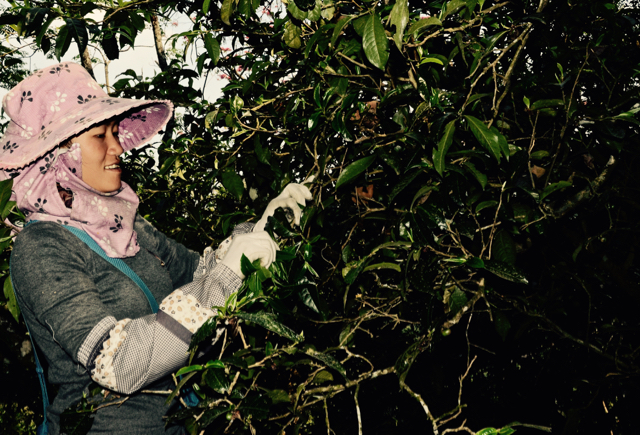Worlds of tea exist in twisted semi-fermented forms, flat green shapes and black beetle bits. Formats, ferments, withering, fries and dries and even the all-too-often mentioned colour designation at times drag some of the thought around tea into a place of too-much.
The spelling, phonetics, and even the often disagreed upon geographic designations bring into focus how tea has lost some of the simplistic aspects as it broadens its liquid reach. Even the spelling of Puerh (Pu’erh, Pu’er, Puer) gets some blood ripping through the veins of purists and sippers.
This little missive of words’ focuses only on Puerh sources and the ‘age of leaves’ question. Regardless of whether a Puerh is a raw (sheng) in cake or loose form, or a cooked (shou) version in pressed or loose form, there is the question of what the age of the provider of leaves is. This question differs from ‘how old the cake is’ or ‘how old the tea itself is’.
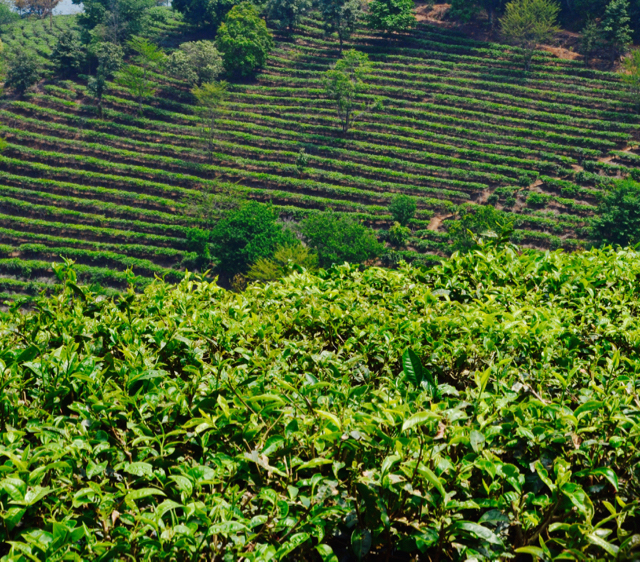
The horizon is a green series of rows of ‘tai di’ or young bushes near Nannuo Mountain, Xishuangbanna.
Age of trees or bushes is one of the questions particularly vital to any discussion or selection of Puerh (regardless of how you spell it). A ten-year old tea doesn’t tell the drinker anything about the age of the leaves when picked, and for many of us this is a more intriguing and more delicious question than it sometimes gets credit for.
Harvests ideally fall into 5 categories…and here I use the simple structure and language of the villagers and locals I’ve long sourced from. Their language is simple, their feel for tea immaculate, and their views rarely overly complex or pretentious. They too disagree at times, and as happens frequently, the terminology that exists is that which has been injected and sometimes imposed upon from the world outside the tea regions. It is this world which needs terms for marketing, marking up, and mystifying (in many cases overly-so).
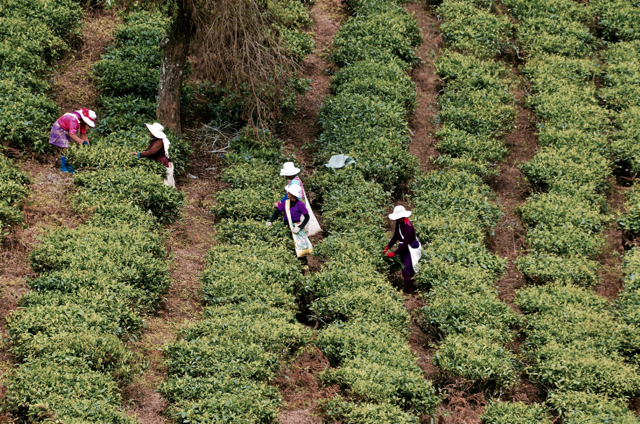
Bushes are often pruned to keep them relatively neat and easy to harvest from. Communities that are fortunate enough to have ancient trees want to retain them in their natural forms and refrain from over-harvesting or over-pruning. The value of such teas consistently rises with each new year.
Each category of ‘age of provider’ has its own breadth of possibilities in terms of flavor profile, aftertaste, qi and effect on the digestive and intestinal systems. There are some general characteristics that locals will refer to again and again when speaking about the ‘age of the source of leaves’. Ancient trees and old trees generally provide smoother teas with less astringency (if produced well). Wild tea trees can carry a load of astringency that can be like a digestive cleanser and scrubbing brush all in one. Medium and younger bushes provide a little more blast and bitterness (not necessarily a negative for many palates). Older trees are also generally fine on empty stomachs, whereas harvests from younger bushes and trees can cause (what a good friend of mine, Rob) once called “true distress on the innards”.
There are five categories that are used by Southern Yunnan locals (and one extra little designation) with a ‘rough’ guideline for age of source. These age numbers – like so very much in the tea world – aren’t always agreed upon standards but they can steer a drinker in a direction. I’ve heard some refer to a 60 year old growth of green as being ancient, and there was a tale that a grower near Lao Ma E(r) in the Bulang Mountains trying to sell an ‘ancient tree tea’ that was likely from 30 year old large leaf bushes.
- Tai Di – Young bushes (Under 15-20 years)
- Sen Tai – Medium Aged bushes (20-80 years)
- Lao Shu – Old tree (80 years +)
- Gu Shu – Ancient Tree (100 years +)
- Yī kē shù – Single Tree (1 tree’s tea leaves. Rare but out there – the leaves are entirely of one single tree. Expensive and something of a treat for those looking for a true single origin tea)
- Yě shù – Wild Tree (Usually old or ancient and somewhat of a wild cat, these teas can be blockbuster brutes but are also capable of being something of a one off stunner).
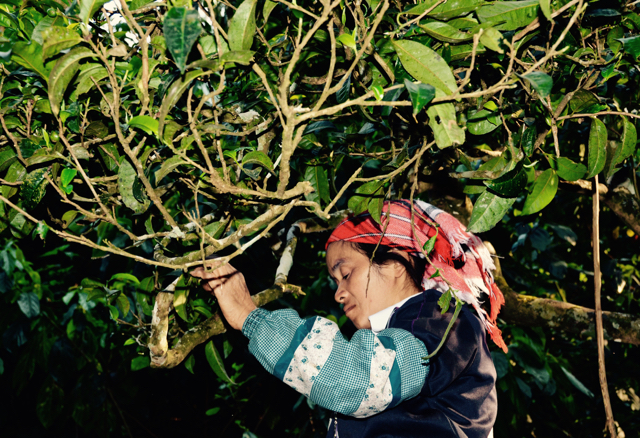
Taking the term ‘single origin’ to another level, there are examples in the Puerh world where there is a limited edition tea that is sourced and harvested from one single tree or bush. Expensive, often fake, but entirely divine if one can find an authentic offering.
Another aspect of tea is mixing and it is here that some of the dark forces come into play. Many so-called ‘Gu Shu’ (ancient tree) offerings are mixed or blended ‘down’ with additional young bush leaves. Well-practiced eyes (and palates) can identify this if one breaks and peers into a cake (this practice is less simple with loose leaf offerings where leaves can be studied in wonderful obsessive detail). By ‘cutting’ the ancient tree leaves with younger leaves, the overall quality is also cut. But who can tell? It is the sometimes only the truly obsessed and knowledgeable that can sniff out a tea that has been cut. For those that care it is one of the great ills of the modern Puerh world, for it is a deliberate attempt to manipulate an end product and ultimately lie to drinker’s palates.
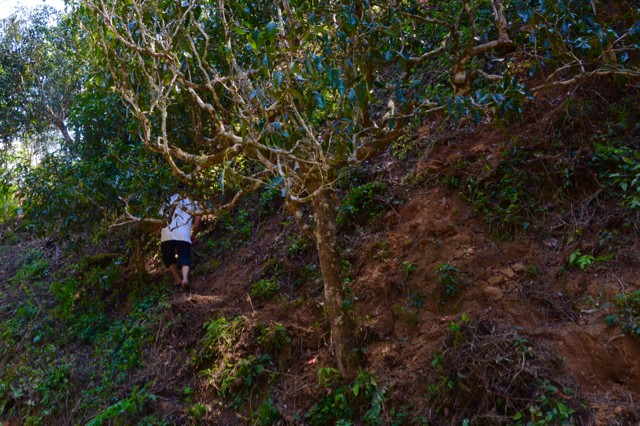
An old tree or perhaps ancient. In any case the tree is around 100 years old according to the locals close to Meng Song, Xishuangbanna.
All of the above ‘ages of sources’ can create great infusions if produced and served carefully, just as a Single Tree Origin’s from an ancient tree can be a mess of awful results if there is incompetence, apathy or simply intentional skullduggery.
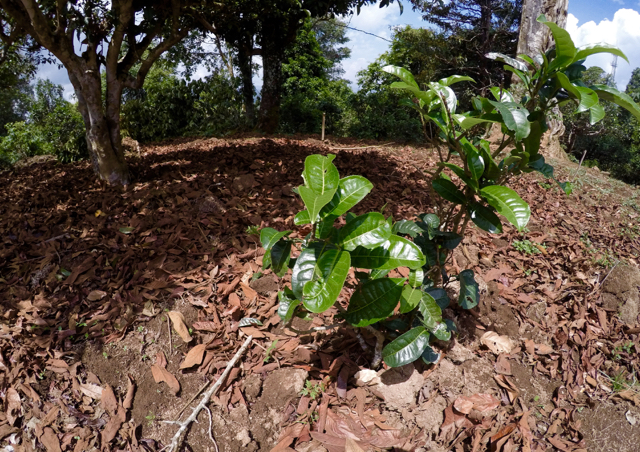
A very young cutting starting its life out near its ancient tree DNA bloodlines in the background in He Kai.
With all things tea there is that informal ‘law of the leaf’: Know your source, and you will know your tea.

